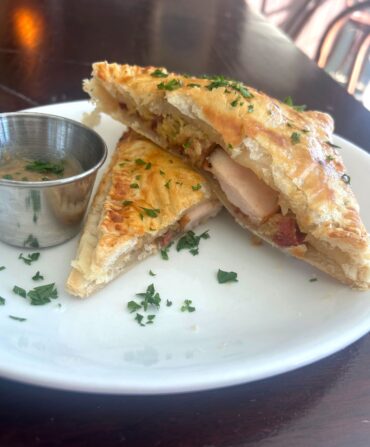The mint julep may be a time-honored guest on the Derby party circuit, but that’s no reason to overlook its equally storied if less flamboyant Kentucky cousin, the old-fashioned. Despite its rather pedestrian moniker, the drink has a gilded ancestry: The honey-hued mixture, served up proper in its eponymous glass, comes from money.
Cocktail lore traces the old-fashioned to late-nineteenth-century Louisville, specifically the Pendennis Club, where the drink was purportedly invented by (or perhaps in honor of) Col. James E. Pepper, a patriarch of Kentucky bourbon whiskey who also kept a successful stable of Thoroughbreds. To this day, the Pendennis remains a private club, making it almost impossible to sample an old-fashioned where it supposedly originated. But you can do just as well at 610 Magnolia, a New American bistro located in the heart of historic Old Louisville. “Right now, there’s a huge interest in the old-fashioned because new generations of drinkers are experimenting with bourbon,” says Chuck Korson, general manager.
Although the elements of the drink aren’t exotic by modern cocktail standards, Korson is exact about them. The right glass is essential (squat with slightly tapered interior walls and a flat base), along with a wooden muddler for maximum surface texture (so it doesn’t slip during the muddling process).
“We honor the style and grace of the original cocktail, with a little alteration but much care,” Korson says. “Because it’s a relatively simple drink, we want to pull as much interest from the ingredients as we can without overpowering the bourbon.” To get the lemon just right, he uses a paring knife to peel a large uneven strip from stem end to blossom end; during the muddle, this shape helps release essential oil from the rind and a little tang from the pith. Cubed sugar, made with larger grains than loose, acts as an abrasive to further expedite the process. “I use cubed brown sugar because it is less refined, and that touch of molasses flavor bestows a little additional complexity,” Korson says.
The most elusive ingredient was once the easiest to find: branch water (essentially stream water). Because bourbon distilleries were traditionally located on streams, the same water used to make the bourbon was also used to mix the drinks. “Branch water is a locavore’s dream,” Korson says. “But since the old-fashioned was invented here, I figure our Louisville water is good enough.”








